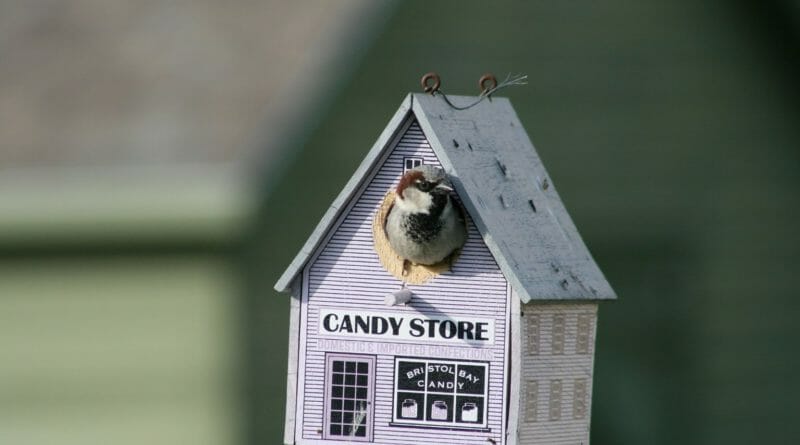Bird House Plans, PDF’s and Video
Designing, Crafting, and Placing Birdhouses –
- Firstly, not all birdhouses are the same, you have to consider species-specific requirements.
- Secondly, the goal of this comprehensive guide is not to create fancy or retail-level birdhouses, just something to get the job done.
- Lastly, you should always keep in mind the general considerations mentioned in the following sections, they will make all the difference.
Cavity nesters are the primary target for birdhouses as these birds tend to nest inside hollowed-out chambers in trees. Common examples of cavity nesters include the adorable bluebirds, the teeny tiny wrens, and the full of spirit chickadees.
Other birds also turn towards birdhouses but primarily, the cavity-nesters have a better chance of showing up.
The most important parameter for dealing with cavity nesters is the entry-hole diameter. This is almost species-specific and you’ll have to be careful in this regard depending on the type of birds you want in your backyard.
Not only will precisely measured holes allow your target species to enter and nest inside the birdhouse but also exclude the pestilent and undesirable ones.
Starlings and common sparrows are notorious for taking over birdhouses and denying access to desirable species. While I am not against these species, I have to stress that if you want bluebirds, you’ll have to make the entry hole only large enough for a bluebird, and no more.
Even in the case of a single species, the requirements will vary among varieties and subpopulations. For instance, you’ll have to look into specific details for Mountain Bluebirds, Western Bluebirds, and Eastern Bluebirds even though they are of similar stock.
The following table summarizes the entrance diameter, entrance height, and mounting height requirements for the birdhouses dedicated to attracting some common cavity nesters.
| Species | Entrance Diameter | Entrance Height | Mounting Height |
| Bluebird | 1.5 inches | 6 inches | 4-6 feet |
| Chickadee | 1.25 inches | 6 inches | 5-15 feet |
| Flicker | 2.5 inches | 4 inches | 6-10 feet |
| Common Finch | 2 inches | 4 inches | 5-10 feet |
| Common Sparrow | 1.75 inches | 6 inches | 10-15 feet |
| Kestrel | 3 inches | 9 inches | 10-20 feet |
| Nuthatches | 1.25 inches | 6 inches | 10-15 feet |
| Owl | 6 inches | 4 inches | 10-15 feet |
| Purple Martin | 2.5 inches | 1.5 inches | 10-15 feet |
| Tree Swallow | 1.5 inches | 4 inches | 5-10 feet |
| Warbler | 1.25 inches | 4 inches | 5-10 feet |
| Woodpecker | 1.25 inches | 7 inches | 10-20 feet |
| Wren | 1.25 inches | 4 inches | 6-10 feet |
Note that a bluebird’s entrance hole, which is 1.5 inches across, is slightly smaller than that of the house sparrow. This means that if you use effective craftsmanship skills and stick hard and fast with these measurements, sparrows won’t be bothering your guest bluebirds.
Smaller birds will be deterred from nesting in larger birdhouses as the larger holes will make them vulnerable to attack from predators.
Consider The Habitat Requirements
Like all other beings, birds have defined distributions, and for most of them, they are permanent. These habitat ranges are important to understand because you can’t expect to attract a particular bird species if it’s nowhere to be seen in your area.
This part will require some sleuthing and researching from your end too. You’ll have to find out which bird species you can expect to show up and populate the birdhouses you set up for these feathery visitors.
For instance, in a wooded area, you can expect visits from nuthatches and chickadees. But if you love the sight of swallows and bluebirds (and if they do live nearby), then you will have a better chance of getting their attention in wide-open fields.
Placement Protocols
The placement is just as important in this regard, after all, you would want to attract the attention of the target species and avoid any pestilence.
Avoid pacing the birdhouse in an area covered by dense foliage as it will complicate the flight path of the parents (who have to go back and forth from their nest). You should also bring into account food availability, protection, and an ample water supply, all of which you can provide.
Moreover, avoid putting a perch on the box as that will give free access to cats, raccoons, and other threatening species, hence jeopardizing the survival of your guests.
In general, you should ascertain that:
- The birdhouse should be off the ground by several feet, keeping ground-dwelling creatures away.
- It should not face the spring winds and instead be placed in the other direction.
- It’s front should not be straight and instead be angled to prevent any raindrops from entering the hole.
The Box Should Be Cleanable
At least one side of the box should be hinged so that you can open it up. Birds, like all other animals, will create quite a mess during their stay and you will have to deal with it.
Once your guests have gone, you’ll have to open up the birdhouse and remove all contaminants. You should also make drainage holes in the bottom.
Common Birdhouse Plans That You Can Try Out
Let’s take a quick look at this YouTube video to better acquaint yourself with the process:
EASIEST DIY Birdhouse with Minimal Tools, Every Step Explained – YouTube
Free Birdhouse Plans – Easy To Follow Guides & Templates (birdinghub.com)

